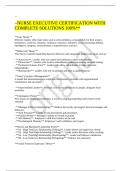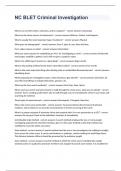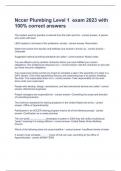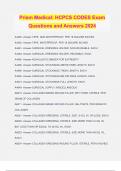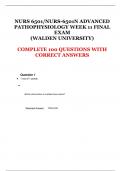Exam (elaborations)
NURSE EXECUTIVE CERTIFICATION WITH COMPLETE SOLUTIONS 100%**
- Course
- Institution
NURSE EXECUTIVE CERTIFICATION WITH COMPLETE SOLUTIONS 100%** **Trait Theory** Effective leaders often share traits such as self-confidence, responsibility for their actions, persistence, creativity, initiative, resilience, tolerance, influence, social structuring abilities, intelligence, inte...
[Show more]
